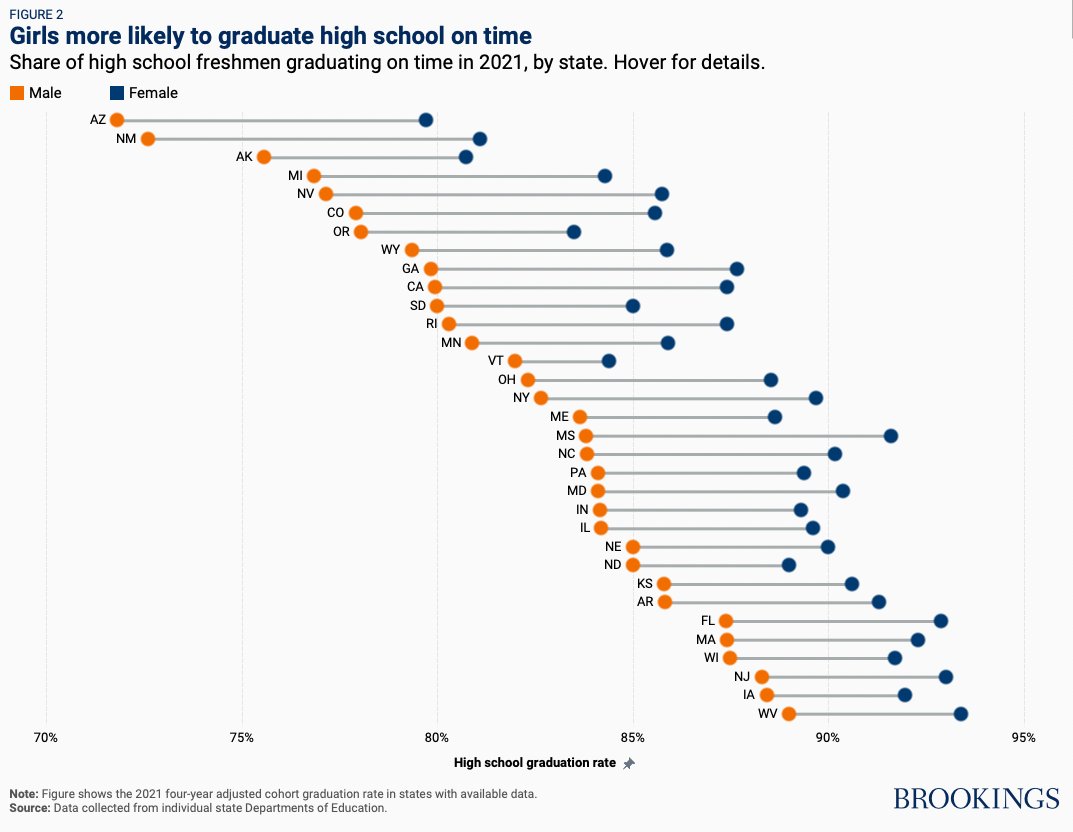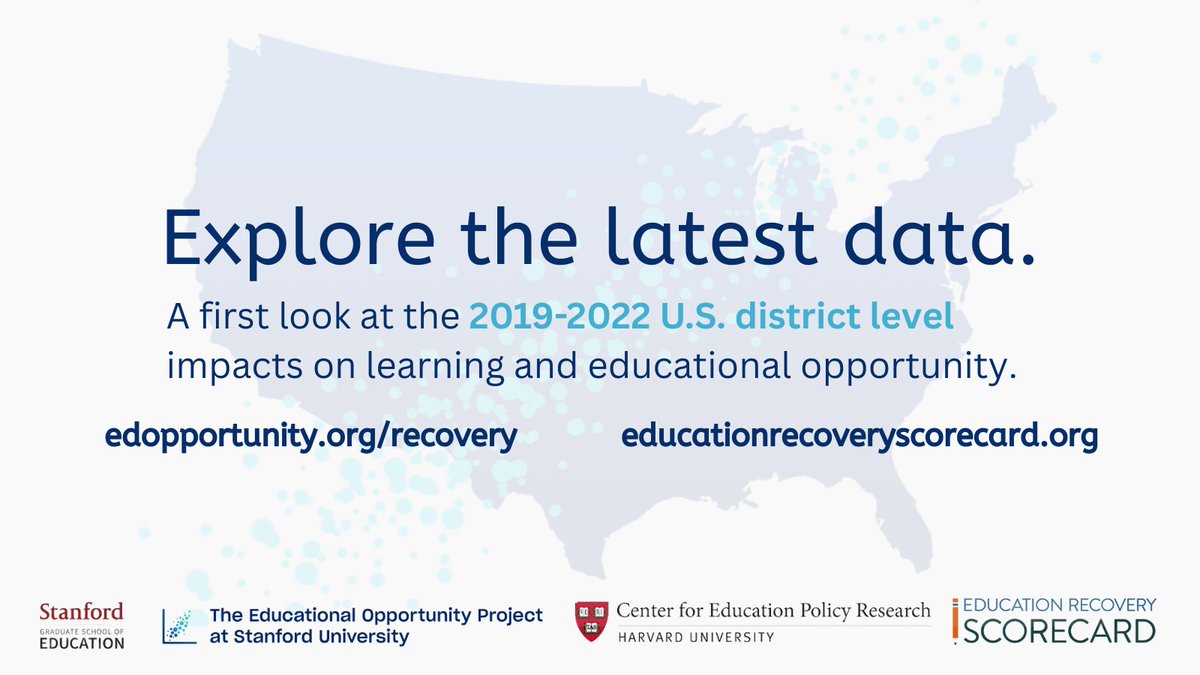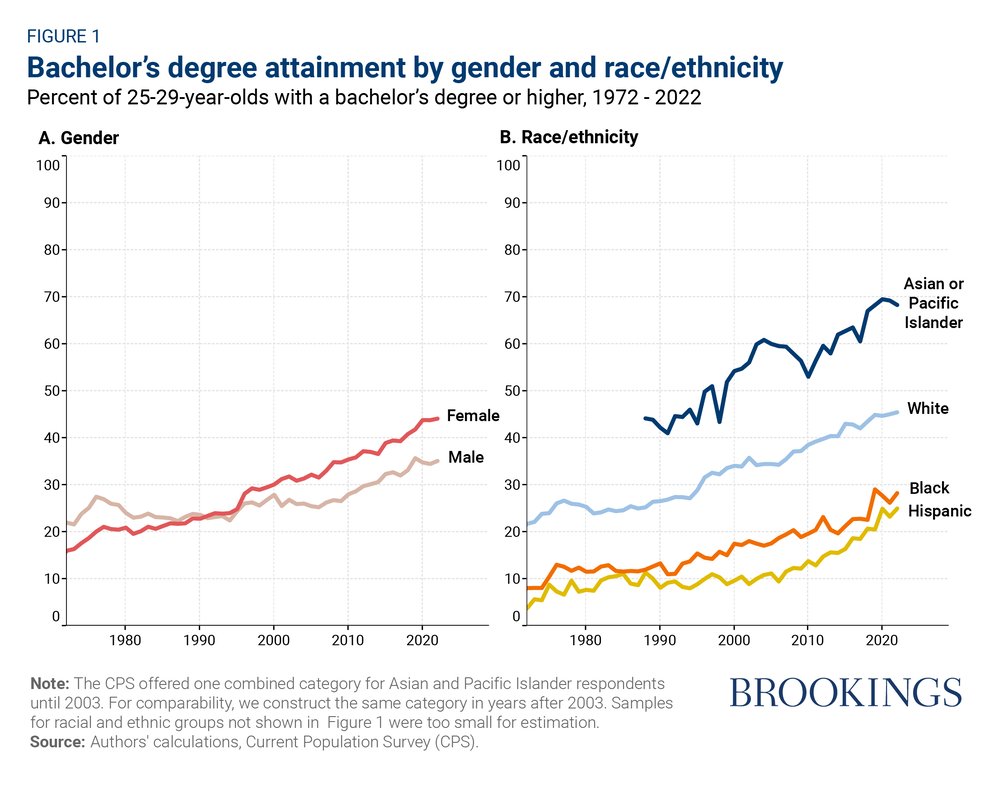
Ember Smith
@ember_smith
PhD student in Public Policy @UCBerkeley | Formerly Research Analyst @brookingsecon | Social Mobility & Education
ID: 1928609377
https://www.emberrsmith.com/ 02-10-2013 23:35:13
81 Tweet
227 Followers
453 Following

In a new paper studying Americans born in the 1940s through 1960s, Ember Smith, Ariel Gelrud, Christopher Pulliam, & Richard V. Reeves find that the median white American in their early 30s had $29,000 more wealth than the median Black American of the same age. brook.gs/39Zf0fy

Wealth inequality is much higher than income inequality in the United States. New research from Ariel Gelrud, Christopher Pulliam, Ember Smith, and John Sabelhaus explores the patterns: brook.gs/3Payi0D

Americans are quite unlikely to move far up or down the wealth ranks early in life, and their chances decrease with age. "Wealth inequality is high. And wealth status is sticky," write Ember Smith, Ariel Gelrud, Christopher Pulliam & Richard V. Reeves brook.gs/3bv7mdb

1/9 My key takeaways from Opportunity Insights Raj Chetty’s new research on friendship and economic mobility brook.gs/3zneSPQ via The Brookings Institution 🧵

Racial wealth gap grows with age as Black Americans become less mobile upward but more mobile downward. Policymakers should work to identify the drivers of wealth disparity. The Brookings Institution report by Ember Smith Ariel Gelrud Christopher Pulliam Richard V. Reeves brookings.edu/blog/up-front/…


Some signature Ember Smith dumbbell charts. 😀

New from me & Ember Smith education gaps by city & state, check out our interactive data: brook.gs/3RiXVNd via The Brookings Institution


Check out college, HS, and K12 gender gaps in your state in my latest with Richard V. Reeves via The Brookings Institution (brook.gs/3RiXVNd)



Girls outperform boys in reading by more than 40% of a grade level in every state. Explore the state-level data and read analysis from Richard V. Reeves & Ember Smith -> brook.gs/3Tie07c

Here's how girls overtook boys in 8th grade math in just a decade (2009-2018) across the U.S. For more on state-level variations in the educational gender gap, channeling SeanReardon et al, see new paper from me & Ember Smith brookings.edu/blog/up-front/…

NEW DATA LAUNCH: See the first district level view of changes in academic performance from 2019-2022, produced by researchers at The Educational Opportunity Project @ Stanford Stanford Graduate School of Education NWEA and Harvard CEPR. Explore data at edopportunity.org/recovery. Learn more at educationrecoveryscorecard.org.



Young U.S. adults today are twice as likely to have a bachelor’s degree as they were 50 years ago, but there are still sizable differences in enrollment by gender, race, and socioeconomic status. Sarah Reber and Ember Smith examine the gaps: brookings.edu/blog/up-front/…

Young US adults today are twice as likely to have a bachelor’s degree as they were 50 years ago, but there are still sizable differences in enrollment by gender, race & socioeconomic status. Sarah Reber & Ember Smith examine: ow.ly/2zOn50Myhk2 via The Brookings Institution

MUST READ: New BrookingsCCF report on the relationship between academic preparation and college enrollment, by Sarah Reber & Ember Smith brookings.edu/research/colle…

Of Americans aged 25-29, 68% of Asian/Pacific Islanders have a BA, compared with 45% of white, 28% of Black, and 25% of Hispanic young adults. New report from Sarah Reber & Ember Smith explores the role of academic preparedness in these disparities: brook.gs/3XwUN4q



Missing milestones doesn't lock in later-in-life outcomes. Still, "the clear relationship between early progress and later success illustrates the importance of investing in young adults early," Richard V. Reeves and Ember Smith write in a new paper. brookings.edu/articles/the-d…
